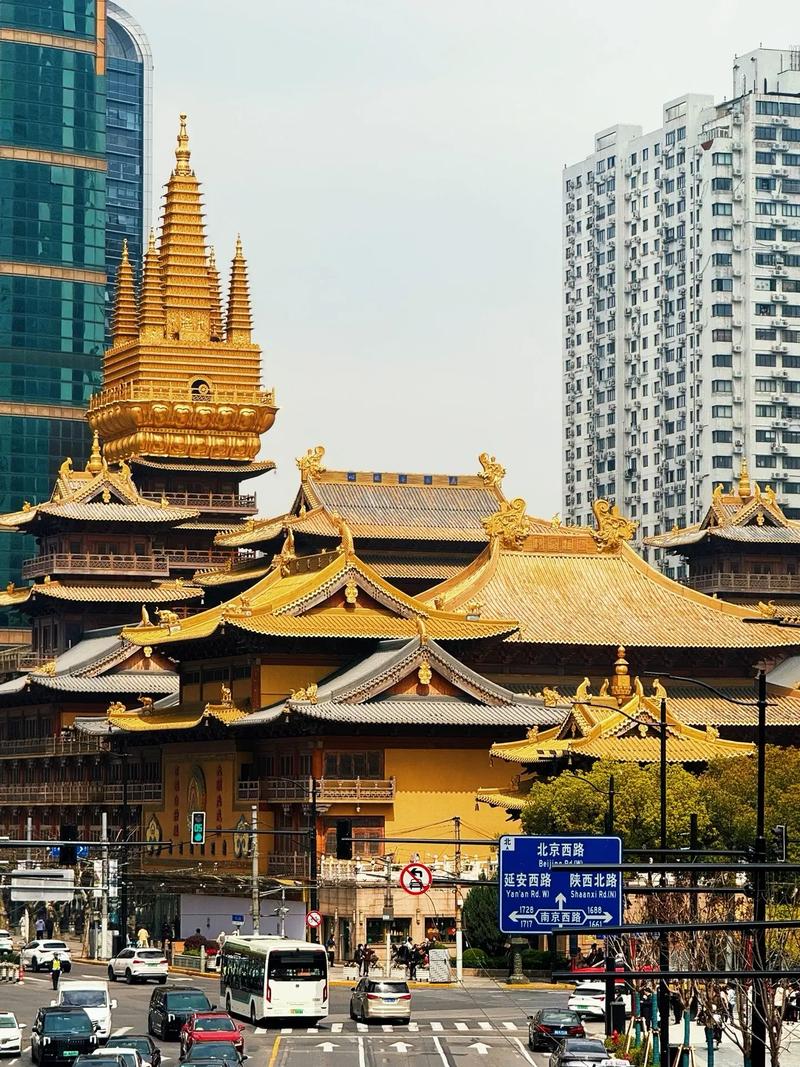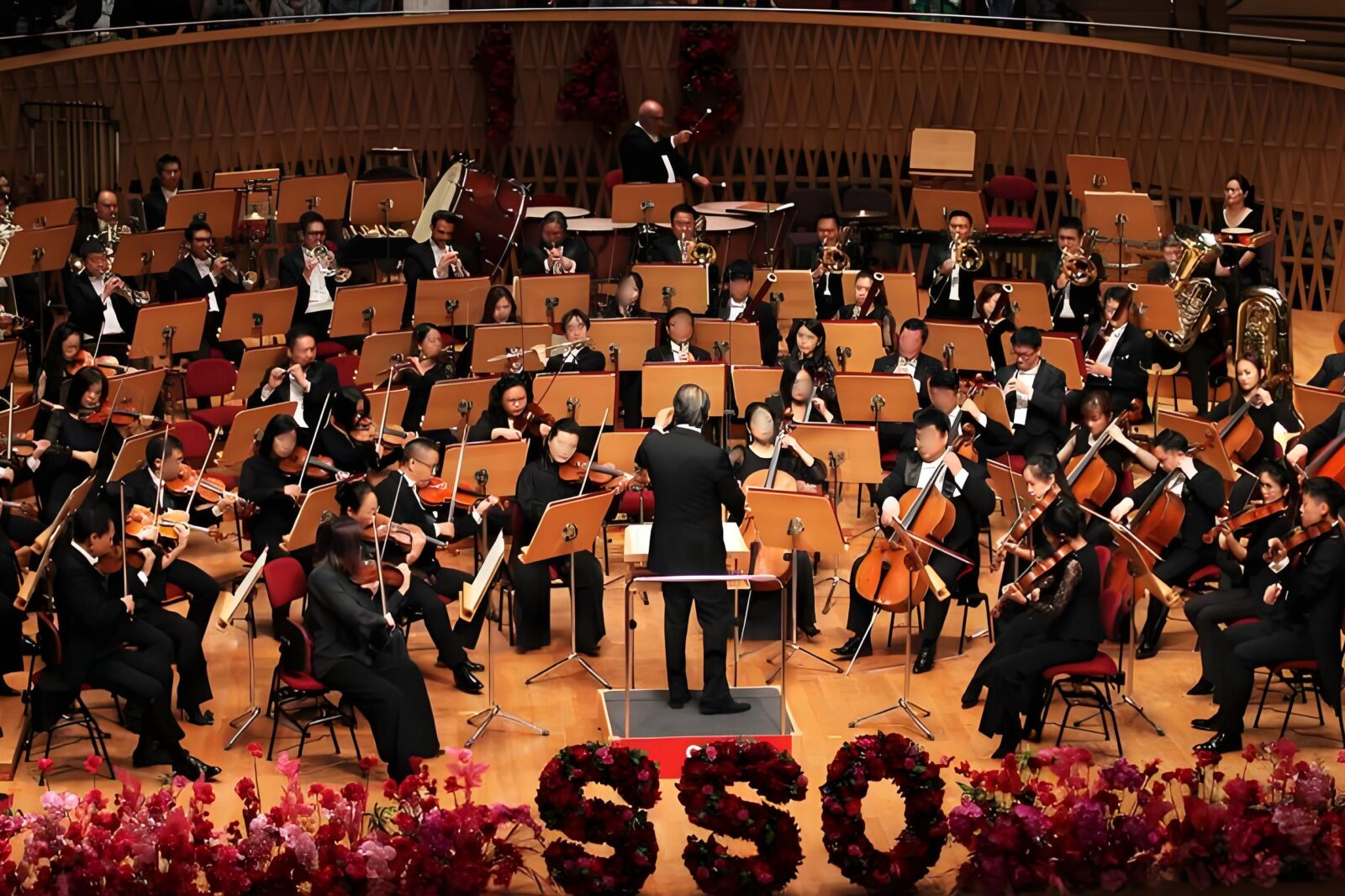You’re heading to Shanghai? Nice. But seriously—what should you actually eat once you’re there? The city’s food scene is massive, but not everything hits. Some stuff looks great on Instagram, then…meh. That’s why I started this Shanghai food blog—to cut through the noise and share what locals actually eat. We’re talking soup dumplings at 8am, pork mooncakes from street ovens, and crispy bites that leave you licking your fingers in an alley. It’s not about chasing food trends—it’s about chasing flavor you’ll remember!
Want to see even more tasty options? Here’s the complete Chinese breakfast guide.
Shanghai Breakfasts That Locals Actually Eat
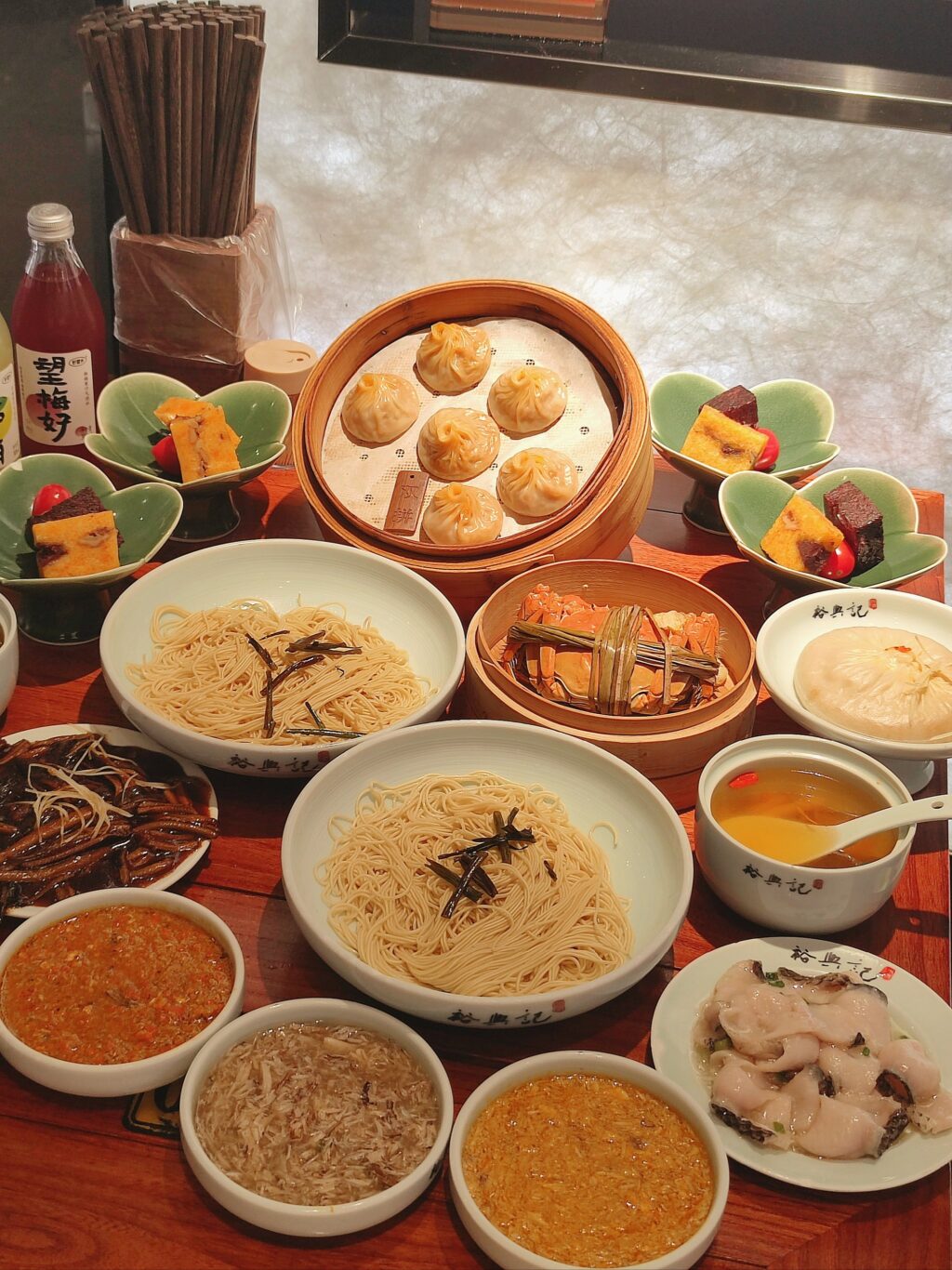
Scallion Oil Noodles、Soup Dumplings and Hairy Crab
Shengjian Bao
Let me warn you now—these things look innocent, but they’re lava bombs. I didn’t know the first time. Landed in Shanghai, barely slept, wandered down Yunnan South Road near People’s Square, and thought: hey, four golden buns for 15 RMB? Sounds perfect. Bit in, and boom—hot soup all over my tongue. Burned, totally worth it. The guy across from me didn’t say a word—just smiled and poked a hole in his with chopsticks before slurping. Right. Lesson learned.
And yeah, you can get them at Xiao Yang Shengjian, which is the chain most tourists end up at. It’s clean, fast, and sort of reliable, if a bit too polished. But I’d go back to Da Hu Chun any day. The vibe there feels older, a little chaotic, but in that good, messy, early-morning way. People eat standing, sauce dripping, chatting between bites. It’s the kind of place you don’t find twice unless you remember the shop’s awning color.
You’ll spend around 12 to 16 RMB for a portion. No menu in English, no fuss. Just point and hope. Honestly, that’s half the charm. When food feels a little unpredictable—but still totally hits—it sticks with you. I still think about that crispy bottom and the oily steam rising as I peeled one from the pan. Probably always will.
Scallion Pancake
There’s something oddly comforting about standing on a Shanghai sidewalk at 7am, holding a paper bag already greasy at the corners. That was my first scallion pancake—fresh off a sizzling pan, flaky and uneven, slightly burnt on one side, and absolutely perfect. I got it from Lai Lai XiaoChi on Yunnan South Road, though I didn’t know its name at the time. I just followed the smell—and the old man pouring soy milk into plastic cups.
Locals always pair it with warm soy milk, the kind that tastes like crushed beans, not sugar. The whole thing costs maybe 20 RMB—less than $3 USD—but tastes like a morning that’s been repeated for decades. Nobody says much. You grab, step aside, take a bite. There’s oil on your fingers and a bit of scallion in your teeth, and somehow that’s the point.
I added it to this shanghai food blog not because it’s flashy, but because it stays with you. It’s one of those foods that doesn’t care about being photogenic—it just shows up hot, cheap, and right on time. Honestly, I didn’t plan to eat the whole thing. I just looked down and it was gone.
Pork Rib with Rice Cake
If you ever walk by Xian De Lai on Yunnan South Road and smell something like fried meat mixed with sweet soy—stop. That’s the pork rib with rice cake calling you. This isn’t some fancy reinterpretation; it’s the version most Shanghainese grew up eating, crispy ribs stacked on top of chewy, slightly sticky rice cakes. I ordered it once out of curiosity and now I stop by every trip. That first bite—hot, salty, with just a hint of sweetness—kind of sneaks up on you.
The rice cake isn’t like the Korean kind or the ones in mochi. It’s thicker, denser, and when it’s stir-fried in that sticky brown sauce, it absorbs everything. There’s something addictive about how soft and chewy it gets, especially with crunchy bits from the pan. Locals eat this as breakfast, which still blows my mind. It feels more like comfort food at 11pm, but hey, it works.A generous plate costs about 25 RMB, around $3.50 USD, and it fills you up for hours.
Vermicelli Soup
This one’s easy to miss. It doesn’t sizzle or smoke or smell especially strong. But on a damp Shanghai morning, when the air feels like it’s wrapped around your bones, a bowl of vermicelli soup from Xi Sheng Yuan on FengZhuang Road hits different. It’s just clear broth, thin rice noodles, and maybe a few slices of cabbage or pork. But somehow it’s exactly what you want.
The texture is half the reason I go back. The noodles are slippery but soft, not too chewy, and the broth isn’t heavy—it’s clean, simple, like something your grandma might make when you’re sick. People dip fried dough sticks into it, or sprinkle a little vinegar. There’s no right way to eat it. It’s not flashy, and it’s not trying to be.You’ll pay around 18 RMB, or $2.50 USD, and walk out warmer than when you came in. It’s the kind of meal that’s quiet, steady, and a little underrated. But in Shanghai, sometimes those are the best ones.
You can find more details about these recommended spots on TripAdvisor if you want to dig deeper.
Classic Shanghai Dishes You Should Try at Least Once
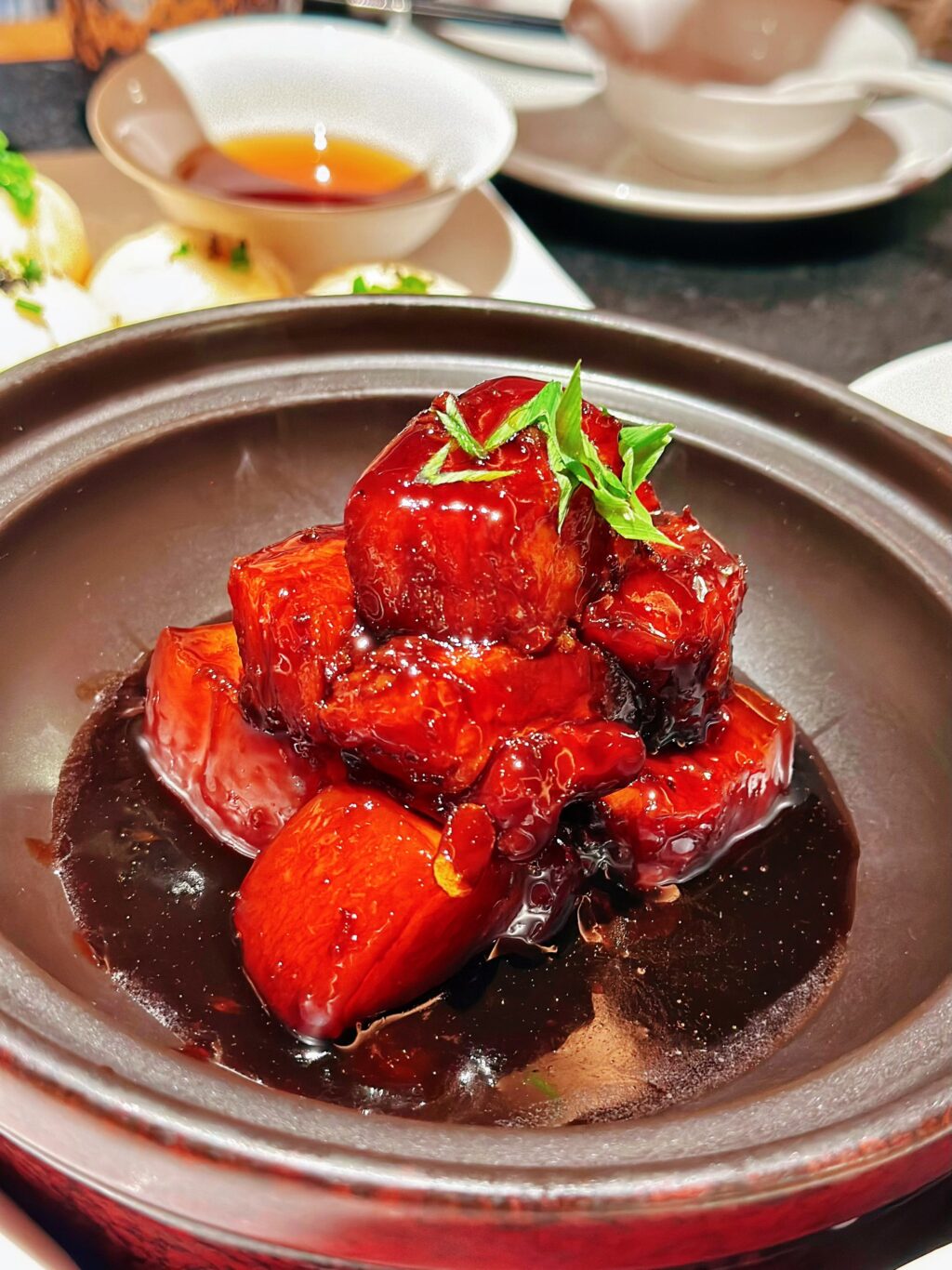
Red-Braised Pork
Red-Braised Pork
If Shanghai had a signature flavor, this might be it. Red-braised pork, or hong shao rou, is pork belly simmered low and slow in soy sauce, sugar, and sometimes Shaoxing wine. The result? Deep, sticky richness that clings to your chopsticks and coats your rice like it belongs there. I had my first serious bite at Jesse Restaurant on Tianping Road, where the sauce was glossy and the fat almost disappeared in your mouth. You taste it and go—ah, so this is what everyone’s been talking about.
It’s a dish locals grow up with. People eat it at weddings, Lunar New Year dinners, even casual weeknights when they need something familiar. You’ll also find it in upscale places like Xin Tai Le, but Jesse feels more intimate, more old-school Shanghai. No frills, just quiet confidence in the cooking.Expect to spend around 200 RMB per person (about $28 USD), which sounds steep for pork—but trust me, this isn’t just pork. It’s Shanghai’s version of soul food.
Eight Treasures Duck
This one’s not a drop-in dish—you’ve got to plan. At Kong Yi Ji near Laoximen, they only make a few per day. You usually need to call ahead, and yes, it’s worth it. The whole duck is deboned and stuffed with sticky rice, lotus seeds, mushrooms, chestnuts, and other “treasures,” then steamed into something rich and oddly soft.
Don’t expect crispy skin or dramatic plating. This is the slow, thoughtful kind of dish you share with people who’ll actually appreciate it. The rice soaks up the duck fat, and each bite is a mix of sweet and savory. A little chewy, a little fatty, and deeply filling. It’s what shows up on holiday tables, and you’ll see why.The average price per person is around 150 RMB (about $21 USD), especially if you split one duck between two or three people.I added it to this shanghai food blog because there’s really nothing else like it. You can’t Google this into existence—it’s something you have to taste to get.
Squirrel-Shaped Mandarin Fish
Let’s be real—this dish is more performance than snack. At Wo Jia Restaurant on Xinhua Road, the chef slices the fish into a fan shape, then deep-fries it until it curls up dramatically. What hits your table looks like something out of a Spring Festival poster, covered in bright orange sweet-and-sour sauce and dotted with pine nuts.
Locals don’t order this casually. It’s for birthdays, holidays, something that deserves attention. The taste? Sweet, tangy, crispy on the outside but tender inside. It’s a dish you photograph, then demolish. For something so theatrical, it’s surprisingly satisfying. And weirdly nostalgic.Plan to spend around 120 RMB per person (roughly $17 USD) if you split it.
Iconic Street Snacks That Define Shanghai Flavor
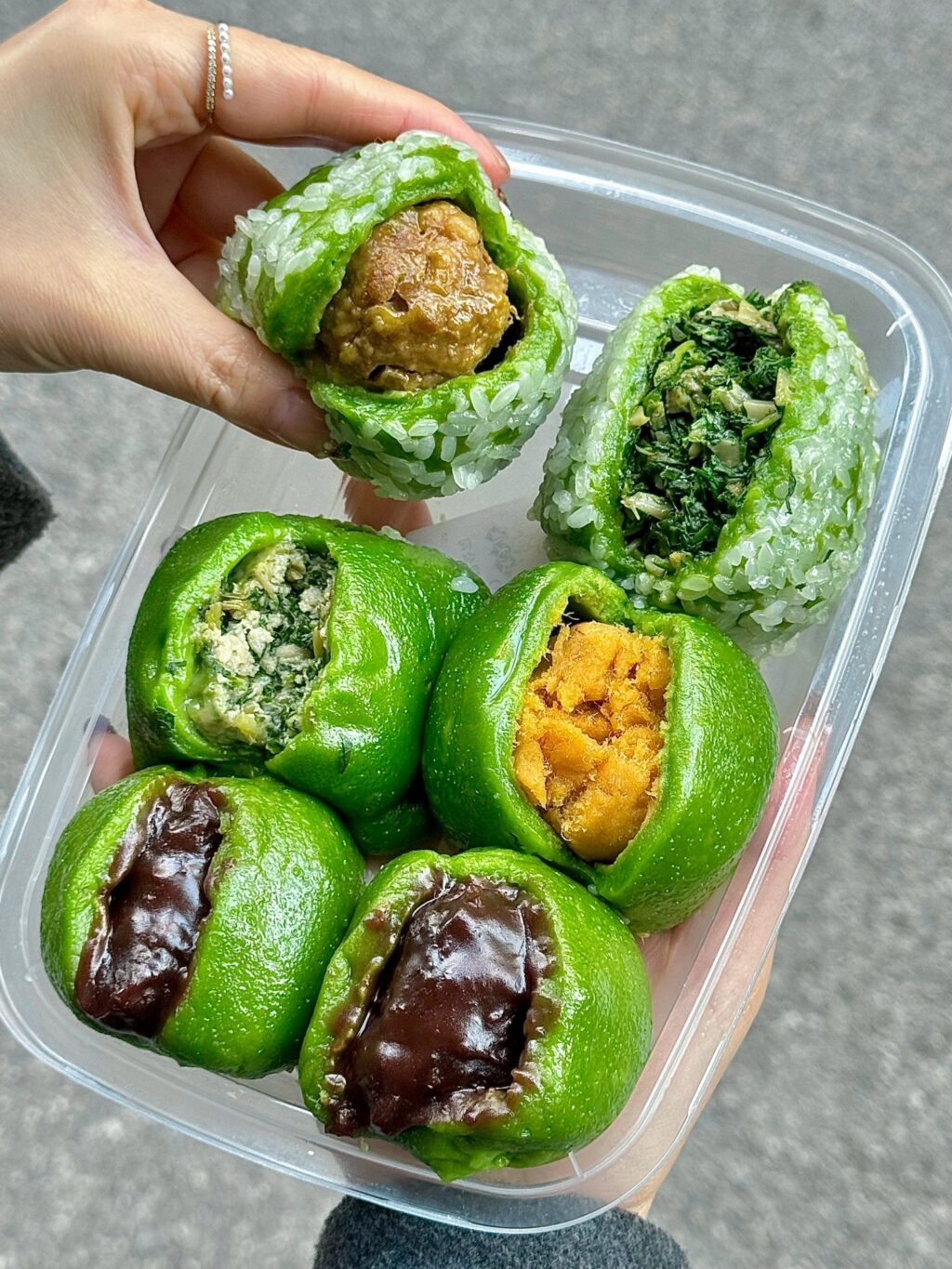
Green Rice Balls
Fresh Pork Mooncake
Most people think of mooncakes as something sweet, dense, and only eaten during the Mid-Autumn Festival. But Shanghai does things differently. Fresh pork mooncakes are savory, flaky, and just greasy enough to be addictive. The filling is basically a juicy meatball wrapped in layers of puff pastry—and if you catch one fresh out of the oven, biting in feels like a small victory. The edges are crisp, the middle is hot and meaty, and honestly, it’s hard to stop at one.
The place I always return to is Guangming Cun on Huaihai Road. It’s not trendy, not tucked away—it’s just well-loved. Every morning there’s a crowd at the counter, and the staff shout numbers as trays of golden pastries fly out of the oven. It’s noisy, slightly chaotic, and kind of perfect. No matter how many times I visit, I always get a little excited when I see the steam rising off the display glass.Each mooncake costs around 5–8 RMB, and yeah, under $2 USD per person makes this one of the best-value bites in town.
Green Rice Balls
Not gonna lie—I thought these were desserts at first. I mean, they look like matcha mochi from afar. But qing tuan, or green sticky rice balls, are their own thing. The color comes from mugwort (a wild herb), and the filling varies. Some are sweet with red bean paste, some have salted egg yolk, and others mix in pork floss. I didn’t expect to like the savory ones, but they grew on me.
Try the ones from Lao Dachang on Shaanxi South Road. You can spot the shop by the line—it wraps around the block during Qingming Festival in spring. Even off-season, they keep them in stock. The texture is sticky but not gummy, soft without being mushy. They’re surprisingly light, which makes it easy to eat two… or three.For around 6–10 RMB per person (less than $1.50 USD), you get something that feels oddly ceremonial. It’s seasonal, traditional, and yet people eat it on the go.
Herbal Tea
This one might surprise you. Shanghai isn’t tropical like southern China, but herbal tea is still a thing—especially when you’ve eaten too much fried stuff. Walk into Xu Qixiu Herbal Tea Shop near Yunnan South Road, and it feels more like an apothecary than a café. Jars lined up behind the counter, steam rising from big metal pots. Locals stop in for a quick drink like it's just part of daily life.
The flavors? Some are bitter, some floral, others surprisingly sweet. I went for the chrysanthemum wolfberry one—it was cold, earthy, and kind of... grounding? The staff gave me a small note explaining what each tea “balances” in the body, which I appreciated even if I wasn’t totally sure what spleen fire is.
You’ll spend about 10–12 RMB per person (that’s around $1.30–$1.60 USD), and honestly, it’s over in minutes. There’s no table, no photos, no ceremony—just drink it warm or cold, and move on with your day. I’ve kept herbal tea in this shanghai food blog because it’s one of those quiet regulars in the lineup. It won’t trend or flood your Instagram feed, but after a whole day of dumplings, fried bites, and all the rich stuff that hits a bit too hard, this is the moment your body says, “Thanks, I needed that.”
I’ve personally tried everything mentioned here—but if you’re hungry for even more Shanghai flavors, this curated list might just point you to your next favorite bite.
The Food Souvenirs Worth Bringing Home from Shanghai
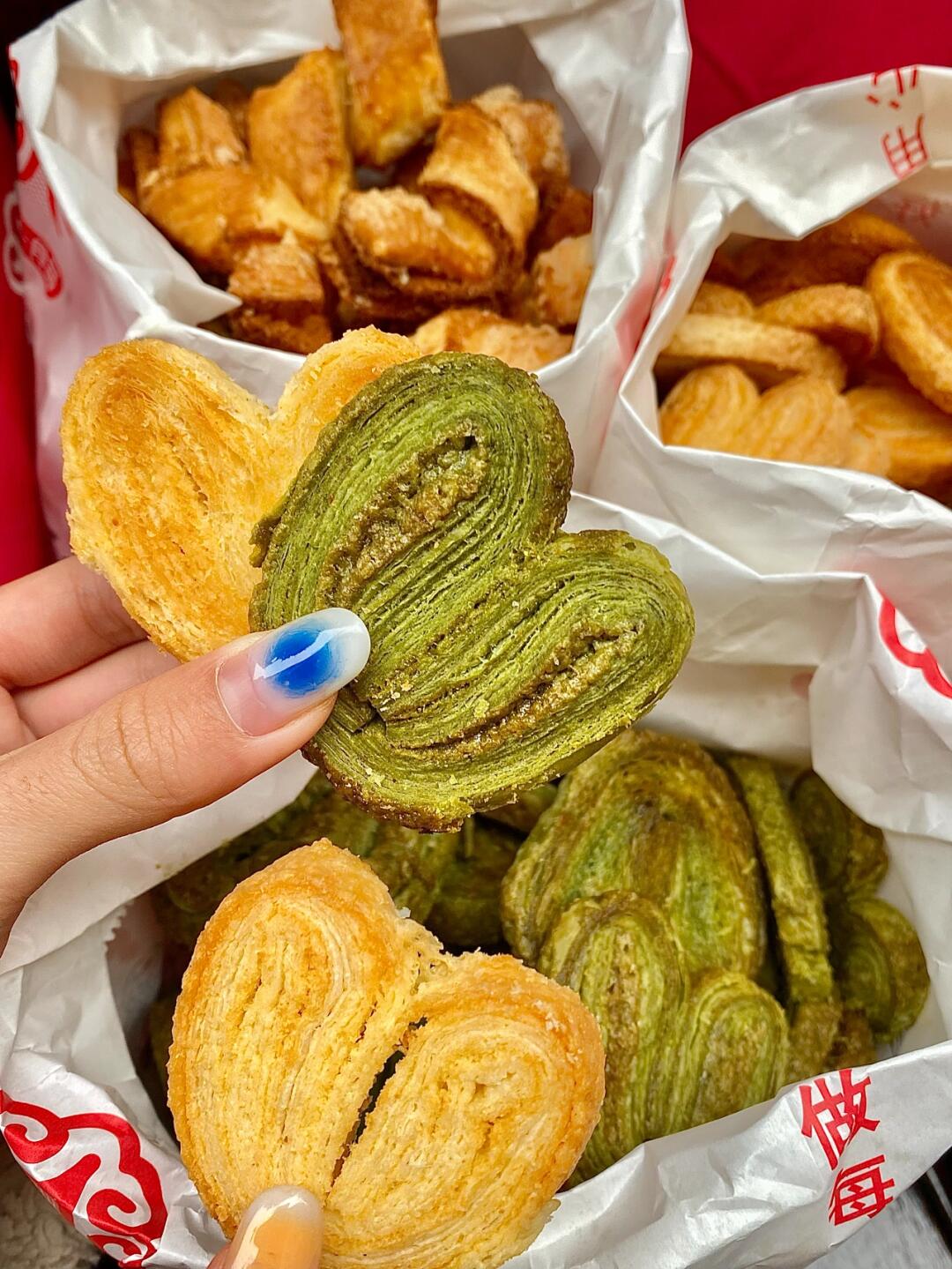
Butterfly Pastry
Butterfly Pastry
Butterfly pastries from Shanghai don’t just taste good—they travel well too. These flaky, golden pastries come layered like puffed snowflakes and are sweet, but never cloying. You take a bite and it crumbles delicately, with just enough sugar to lift the buttery richness. It’s not messy, not sticky—just neat, nostalgic, and honestly kind of addictive.
Old Dachang Bakery on Huaihai Road (No. 558) is where locals go for the real deal. Their pastries come in vacuum-sealed packs—perfect for tossing in your luggage without worrying about crumbs or squishing. A single bag costs around 25 RMB (roughly $3.40 USD), and you can easily grab a few to share back home. It’s like passing around a little piece of Shanghai at your next gathering.
To me, these kinds of sweets are what make a shanghai food blog worth reading—something that fits in your bag and still makes people smile thousands of miles away.
White Rabbit Candy
There’s something charming about handing someone a White Rabbit candy and watching them hesitate—then smile when they realize the wrapper is edible. That milky, chewy texture hits a very specific comfort note. And yeah, it’s technically a kids’ candy, but you’d be surprised how many grown-ups ask for seconds.
You can find gift boxes starting at 39 RMB ($5.30 USD) at the White Rabbit flagship shop in Jing’an’s Jiuguang Department Store. If you’re flying out, they also sell handy souvenir tins and bundles—great for office gifts or just spreading some Shanghai nostalgia around your friend group. Plus, they won’t melt, crush, or leak.
Drip Coffee Packs
Forget glass jars or bean grinders—Shanghai’s drip coffee packs are sleek, flat, and made for travel. Local roasters like Seesaw Coffee (Kerry Centre, Jing’an) have turned these little filter bags into mini taste postcards. You open one, hook it over your mug, pour hot water, and boom: decent coffee without the machine or the café price.
Each pouch costs around 10–15 RMB ($1.40–$2.10 USD). You can pick up a few different roasts (I’d go for the light to medium ones—easier on the palate), and they’re light enough to slip into a coat pocket. They also come in minimal, pretty packaging, so gifting them looks intentional, not like an airport afterthought.
Looking for more edible souvenirs from China? Here’s our full guide.
Frequently Asked Questions (FAQs)
Q: Is it easy to find vegetarian or vegan versions of traditional Shanghai dishes?
It’s getting easier, but you still have to look a bit. Most traditional Shanghai dishes, like red-braised pork or soup dumplings, are meat-heavy. That said, many places now offer veggie takes—like mushroom-stuffed shengjian or tofu-based rice dishes. Buddhist restaurants (look for ones near temples) tend to have full vegan menus. Apps like Dianping (大众点评) help filter by dietary needs. You won’t go hungry, but don’t expect every corner noodle shop to have tofu replacements.
Q: Can I pay with a foreign credit card at these local eateries and snack shops?
Some high-end restaurants might accept foreign cards, but most local joints—especially street vendors or old-school shops—don’t. Your best bet is using Alipay or WeChat Pay with a linked international card. It’s quick to set up, and even small stalls often accept QR code payment now. Always carry a bit of cash just in case; about 300–500 RMB should be enough for a food day out.
Q: What are some food-related customs or taboos I should be aware of when eating with locals in Shanghai?
Locals won’t expect you to know everything, but small gestures go a long way. Don’t stick chopsticks upright in rice—it resembles a funeral ritual. Try not to waste food; sharing dishes is common, and leaving too much uneaten might feel rude. Also, don’t be surprised if someone insists you take the last bite—it’s seen as a polite offer, not pressure. Slurping soup? Totally fine.
Q: Are there food tours in Shanghai that focus on street snacks and old-school local flavors?
Yes—and they’re worth it. Several walking food tours now take you through spots locals love, like the old alleyways near Yuyuan or the late-night stalls in Jing’an. You’ll try everything from scallion pancakes to drunken chicken, often guided by bilingual hosts. Prices range from 200 to 600 RMB per person, depending on how fancy the stops are. Booking ahead online is a good idea.
Q: How can I avoid getting overcharged at popular food spots or touristy restaurants?
First rule: check the price before ordering. Look for menus with printed prices or digital screens. Avoid places where someone outside is aggressively pulling you in. If a spot has long lines of locals and no touts, it’s usually safe. Also, use apps like Dianping to check real user reviews—if you see complaints about small portions and inflated prices, skip it.
